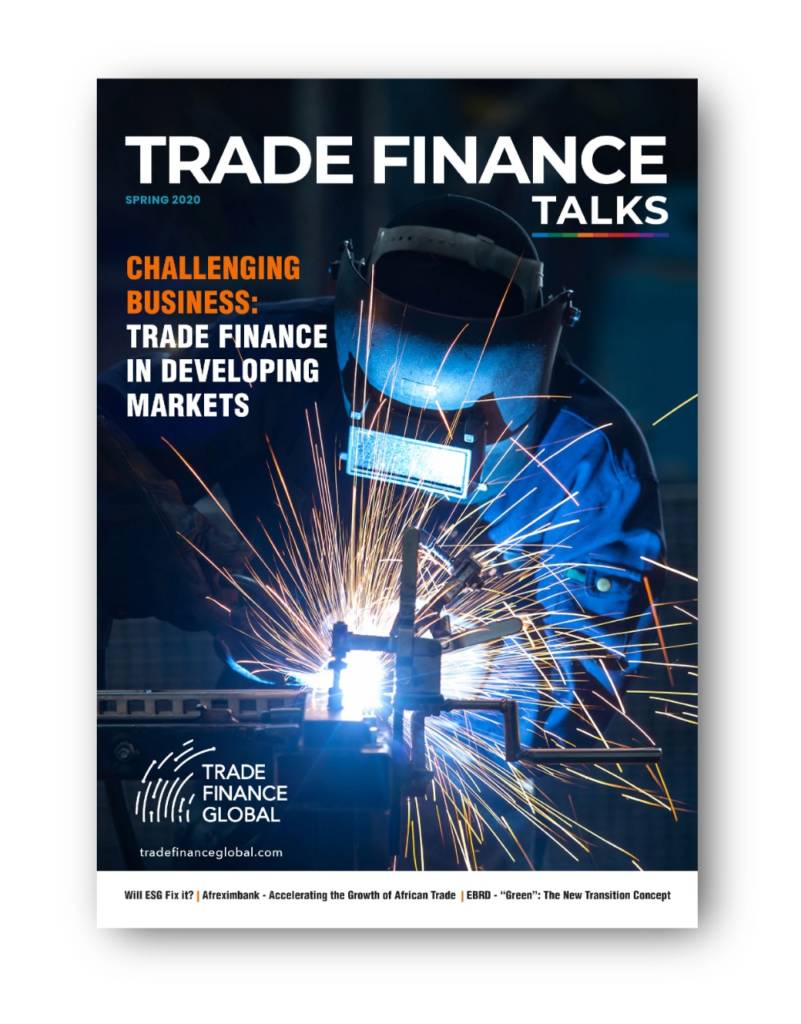Talking Trade, Bank of America. The pace of change in 2019 is not showing signs of slowing down in 2020. Already, it is shaping up to be another challenging year for trade finance and the overall business environment for Asia Pacific.
The pace of change in 2019 is not showing signs of slowing down in 2020. Already, it is shaping up to be another challenging year for trade finance and the overall business environment for Asia Pacific.
We will see five key themes that are likely to continue to pose challenges this year, moving us towards some specific outcomes.
Macro Environment
Macro uncertainty continues to be a key factor impacting growth as we continue to see a slowdown in trade flows, in part due to the US/China trade negotiation, layered on top of a broad based slowdown across developing and advanced economies. This will be further compounded by the impact of Covid-19 outbreak globally. These among other factors will continue to influence corporates to re-evaluate their supply chain strategy – with a bias towards greater diversification of their supplier base and locations, and manufacturing locations. Although we saw no significant shift of existing capacity out of China in 2019, I anticipate we will see this accelerate this year. In Asia Pacific, South East Asia – particularly Vietnam – continues to grow in prominence.
Banking Industry
De-risking amongst transaction banks – while not new – has in part played a role in maintaining the trade finance gap, whereby smaller organizations are unable to gain access to financing. As banks rationalized their client populations and correspondent relationships, coupled with an increasing burden of KYC and compliance requirements, it is no surprise the gap (now estimated to be $1.5trillion according to ADB) has not been narrowing.
Regulatory Change
The evolving regulatory environment continues to influence how banks and companies do business across the region. Alongside increasing complexity – India being a good example – we are seeing an increase in ‘regulatory nationalism’. For example, the increase in data on-shoring requirements, the development of local standards, rules and practices (instead of adopting global ones) all add complexity to a trade finance business that inherently involves cross border flows. Keeping up and complying with these regulations requires investment thus diverting resources from other growth initiatives.
Sustainability
2020 will be the year of sustainable finance. Increasingly, businesses have started focusing on ESG and it will come into further prominence this year especially for emerging markets in the region. In trade finance, this goes beyond environmental considerations, but includes building sustainable supply chains, ethical business practices, and how banks and companies seek to use financing to drive the right behaviour and outcomes. We will see more focus on developing tools that enable and encourage sustainable and responsible supply chain management.
Technology
The final challenge and arguably the most important. Why? Because while technology evolution presents challenges and investment requirements, it can also act as a solution or catalyst for the other themes discussed above.
Real-time payments is a dominant trend in Asia and will help increase the velocity of capital and ultimately support greater trade activity.
Digitalization will drive improved efficiency within trade business, converting physical paper into a digitized environment and using improved technology like OCR (optical character recognition) and robotics to reduce cycle times and improve accuracy.

Data and how to manage it will present challenges, but the opportunities will be immense. Richer data not only gives banks and clients insight into their business, it can improve risk management, facilitate credit decisions, help with compliance and AML monitoring, and deliver greater transparency into supply chains and whether they meet ESG objectives.
New technology such as distributed ledger technology (DLT) will have its place, and it is heartening to see the trade finance industry collaborating around these new technologies more than ever before, to help define a common way of deploying it across the industry. DLT and the emergence of interoperable industry consortia may be key to unlocking financing for smaller companies and less-developed markets, helping to close the trade finance gap.

The challenge for these new technologies in 2020 will be around defining common standards, creating inter-connectivity that avoids digital islands, all underpinned by sound legal and regulatory standards that allow the trade finance industry to safely adopt these new innovations.
In conclusion, 2020 presents many challenges and uncertainty, particularly for emerging economies and Asia Pacific in particular. However, these same markets are often best-positioned as early adopters of new technology and innovation. For them, the business case is often greater, it is an opportunity to leap frog their advanced economy cousins, and position their economies to be ready to leverage shifting supply chains and trade flows. As a by-product, this technology will deliver greater agility in addressing some of the other industry challenges that will emerge.
Perhaps it is this latest digital-industrial revolution that will finally propel the highly manual and paper-based trade finance industry into the 21st century.
More from Bank of America
Now launched! Spring Edition 2020
Trade Finance Global’s latest edition of Trade Finance Talks is now out, taking a deep dive into trade finance in emerging and developing markets.


































